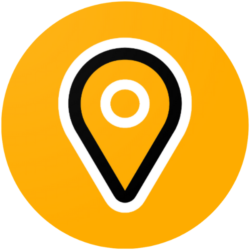
Local Guide to Buying Wood and Lumber in Korea
We often get questions about buying lumber in South Korea. Many international residents what to take up woodworking and don’t know how to get started. Here is your guide to buying wood in Korea for your hobbies.
Buying Lumber in Korea
Whether you’re a hobbyist building furniture or just trying to repair a bed frame, buying wood in South Korea might feel confusing at first. The process, materials, and store layout can differ greatly from what you may be used to in countries like the US or Canada. This guide will help you understand how to shop for wood in Korea, what types are available, and what to expect along the way.

Where to Buy Wood and Lumber in Korea
In Korea, you will find wood for projects in many different places. So you will choose your where to shop based on the size and type of project you are building.
Prefab Projects
If want to build pre-fabricated wood projects or need simple supplies for creating your own designs, you an sometimes find what you need at:
- 이케아 (IKEA Korea)
- 홈플러스 (Homeplus) – basic panels and DIY sets
- 다이소 (Daiso) – small, pre-cut craft wood and dowels
Keep in mind, the options at these spots are very limited. Don’t expect much, but you can find somethings for small projects.
Online
Interestingly, you can also purchase a lot of lumber online and have it delivered right to your house. Naver Shopping, Coupang, and Gmarket offer wood panels, dowels, MDF boards, and plywood sheets – usually pre-cut and ready for shipping.

Search terms for Lumber
To find lumber in the online stores search the following terms:
- 원목 (solid wood)
- 목재 (lumber or wood materials)
- 합판 (plywood)
- MDF 보드 (MDF board)
- 집성판 (laminated board)
- 각재 (dimensional lumber / squared timber)
Lumber Yards
Finally, if you want to find a lot of lumber, you need to head to a lumber yard. These won’t look like Home Depot in the United States. Instead, these are smaller shops that focus specifically on wood and lumber. You can find these by searching 목재 and adding your city 평택.
If you life in Pyeongtaek-si, we also have a blog just for you with some of the best lumber yards in the area.

Common Types of Wood in Korea
While some global standards exist, you’ll find these types more common or more easily available in Korea:
| Korean Name | English Name | Notes |
|---|---|---|
| 소나무 (Sonamu) | Pine | Inexpensive, common for basic construction |
| 원목 (Wonmok) | Solid wood | A general term – often used loosely |
| 합판 (Hap-pan) | Plywood | Widely available, often used in construction |
| MDF 보드 | MDF Board | Dense, smooth – great for indoor furniture |
| 집성목 (Jip-seong-mok) | Laminated Board | Several small pieces glued together – stable and popular for shelving and tables |
| 편백나무 (Pyeonbaek namu) | Hinoki cypress | Used for cutting boards and saunas – prized for scent and antimicrobial properties |
| 레드파인 (Red Pine) | Red pine (imported) | Often sold as a premium pine option |
Imported hardwoods like oak, walnut, or teak may only be available through specialty sellers or woodworking shops and can be quite expensive.
Culture Shock Points When Buying Wood in Korea
If you’re new to Korea, shopping for lumber might throw you off a bit. Here are some of the biggest surprises:
1. Pre-Cut Is the Norm
Don’t expect to wander through a giant lumber yard picking from large stacks of raw, uncut timber. Most wood is sold in pre-cut sizes, often tailored to popular DIY projects. Large-scale cutting or custom sizing may require visiting a specialized woodworking store or contacting a fabrication shop (가공소).
2. Limited In-Store Selection
Major stores may only carry small panels or decorative boards. If you’re planning a big project, you’ll likely need to order online or visit a local lumber yard.
3. Measurement Units
Korea primarily uses the metric system, so dimensions will be in millimeters and centimeters, not inches or feet. Easy for most of the world, but often hard for those from the United States to adjust to.
Example: 18T x 600mm x 1200mm (T = thickness)
4. Lack of Staff Assistance in English
Most staff in hardware stores and lumber suppliers do not speak English. Bring pictures, measurements in metric, or use a translation app like Papago. It’s helpful to write down the name of the material in Korean ahead of time.
5. No On-Site Vehicle Loading
Unlike some countries where someone helps load your wood into a truck, in Korea you’ll usually carry it to your car yourself or have it delivered via courier – sometimes for a fee. Be prepared to pay for delivery even for wood.
Few DIY Cutting Areas
You won’t usually find free cutting stations. Some stores may offer paid cutting services, but it depends on location. For custom projects, it’s best to search for 가구 제작 (custom furniture making) or 목공소 (wood workshop) on Naver.
Useful Hangul Search Terms
Here are some Hangul keywords you can use on Naver or Coupang:
- 목재 쇼핑 (wood shopping)
- DIY 목공 (DIY woodworking)
- 원목 판재 (solid wood panels)
- MDF 판넬 (MDF panel)
- 목재 자재 (wood materials)
- 목공소 (wood shop / workshop)
- 합판 판매 (plywood for sale)
Locations Around Pyeongtaek-si
If you live near Pyeongtaek-si, we have a blog just for you!

Founded in 2015, the South of Seoul team consists of volunteers on three continents working together to support English-speaking people traveling or living in South Korea. South of Seoul volunteers work with organizations and individuals across South Korea to improve equitable access to information across South Korea. Much of South of Seoul’s information focuses on Pyeongtaek, Gyeonggi-do, South Korea.
Blogs published under the authorship of “South of Seoul” include blogs compiled by multiple volunteers to improve access to standardized information unrelated to individualized personal experiences.





